Evolutionary Ecology
The department of Evolutionary Ecology gathers complementary skills in behavioural ecology, population dynamics, population biology, community ecology, and methodology (statistics and modelling). The research done in the department aims at studying how animal species evolve in a changing world by understanding the causes of the evolution of traits, adaptations and interactions. For that, we consider different levels of organization from individuals to populations and communities. Because organisms cannot be considered isolated from other biotic factors, we consider pathogens but also competing species within communities.
We study how individuals adapt to their environments that are largely impacted by anthropic pressures, and how life history traits and behaviour evolve in response to these pressures. Although we mainly focus on phenotype, we more and more consider the mechanistic link between the genotype and the phenotype. We develop the theoretical framework of our discipline through a conceptual and modeling approach. In parallel, we test hypotheses that arise from theoretical predictions through experimental, comparative and observational approaches on different biological models (insects, birds, mammals). Experimental approaches are developed in the laboratory (insect model) and in natura (bird, insect and mammal models). Observational and comparative research is mainly concerned with vertebrates. Our approaches are also, and increasingly, interested in the mechanisms of adaptive responses. In addition to the classical approaches of demographic analysis and trait change, methods of ecophysiology, chemical ecology and molecular biology are used.
Our department hosts several long-term studies of wild populations of different species. These long-term studies offer a valuable way to understand how biotic and abiotic factors affect individuals’ life history traits, and the functioning of populations in natura. Five populations of mammalian species are thus monitored for several years (more than 40 years on roe deer, 30 on Alpine marmots, 25 years on cats, 16 years on zebras, and 20 years on impala). Two of our study sites (La Sassière in Vanoise National Park (Alpine marmots) and Hwange National Park) have been certified as “Site d’Etude en Ecologie Globale” (SEEG), and two (ZA “Hwange” and ZA “Antarctic and sub-Antarctic”) were certified as “Zone Atelier” by the CNRS.
The department of Evolutionary ecology is also largely involved in training activities. Lastly, we also have strong socio-economic relationships. Indeed, because we address questions of major societal interest (global warming, public health) we tightly collaborate with socio-economic partners (Office Français de la Biodiversité, Vanoise National Park, Hwange National Park in Zimbabwe, Office National des Forêts, etc.) and participate to general public and media events.
Publications
Display of 1831 to 1860 publications on 2449 in total
Measles virus induces oncolysis of mesothelioma cells and allows dendritic cells to cross-prime tumor-specific CD8 response.
Cancer Research . 68 ( 12 ) : 4882-92
Journal article
see the publicationChronic effects of ivermectin on Daphnia magna and Ceriodaphnia dubia: between-species and between-strains comparisons
SETAC Europe 18th Annual Meeting . : 1
Poster
see the publicationChronic effects of ivermectin chronic effects of ivermectin on daphnia magna and ceriodaphnia dubia: between-species and between-strains comparisons
SETAC Europe 18th Annual Meeting . : 1
Poster
see the publicationStatistical cautions when estimating DEBtox parameters
Journal of Theoretical Biology . 254 ( 1 ) : 55-64
Journal article
see the publicationAn individual-based model to describe a Bullhead population dynamic including temperature variations
Ecological Modelling . 215 : 377-392
Journal article
see the publicationPollution, stochasticity and spatial heterogeneity in the dynamics of an age-structured population of brown trout living in a river network
Demographic toxicity: Methods in ecological risk assessment . 978-0-19-533296-4 : 168-183
Book chapter
see the publicationPopulation Dynamics of Grayling: Modelling Temperature and Discharge Effects
Mathematical Modelling of Natural Phenomena . 1 ( 1 ) : 31-48
DOI: 10.1051/mmnp:2006002
Journal article
see the publicationTesting for phylogenetic signal in phenotypic traits : a new matrix of phylogenetic proximities
Theoretical Population Biology . 73 : 79-91
Journal article
see the publicationLocal effects of inbreeding on embryo number and consequences for genetic diversity in Kerguelen mouflon
Biology Letters . -- : 374-380
Journal article
see the publicationSpatial and temporal patterning of bank vole demography and the epidemiology of the Puumala hantavirus in northeastern France
Epidemiology and Infection . 136(12) : 1638-1643
Journal article
see the publicationPopulation density and sex do not influence fine-scale natal dispersal in roe deer
Proceedings of the Royal Society B: Biological Sciences . 275 ( 1646 ) : 2025-2030
Journal article
see the publicationInfluence of contact heterogeneity on TB reproduction ratio R$_0$ in a free-living brushtail possum Trichosurus vulpecula population
Veterinary Research . 39 ( 3 ) : 1
Journal article
see the publicationThe exotic legume tree species Acacia holosericea alters microbial soil functionalities and the structure of the arbuscular mycorrhizal community
Applied and Environmental Microbiology . 74 : 1485-1493
Journal article
see the publicationAn individual-based model to describe a bullhead population dynamics including temperature variations
Ecological Modelling . 215 : 377-392
Journal article
see the publicationDo vertically transmitted symbionts co-existing in a single host compete or cooperate? A modelling approach
Journal of Evolutionary Biology . 21 : 145-161
Journal article
see the publicationUnexpected male choosiness for mates in a spider
Proceedings of the Royal Society B: Biological Sciences . 275 : 77-82
Journal article
see the publicationUse of the library fitdistrplus to specify distribution from non-censored or censored data
Report
see the publicationDoes constrained oviposition infl uence offspring sex ratio in the solitary parasitoid wasp Venturia canescens ?
Ecological Entomology . 33 : 167-174
Journal article
see the publicationThe Risk of Flawed Inference in Evolutionary Studies When Detectability Is Less than One
The American Naturalist . 172 ( 3 ) : 441-448
DOI: 10.1086/589520
Journal article
see the publicationSenescence rates are determined by ranking on the fast–slow life-history continuum
Ecology Letters . 11 ( 7 ) : 664-673
Journal article
see the publicationTailles du domaine vital du Chevreuil Capreolus capreolus estimée à partir de données VHF et GPS
Wildlife Biology . 14 ( 1 ) : 101-110
Journal article
see the publicationEtude des variations spatio-temporelles de l'activité et de l'utilisation des ressources par les herbivores. L'exemple du mouflon méditerranéen (Ovis gmelini musimon x Ovis sp.) et du chevreuil (Capreolus capreolus).
Thesis
see the publicationÉchecs de localisation des colliers GPS :une source d'erreurs à maîtriser
incollection . -- : 85-93
Journal article
see the publicationDemographic and Dispersal Constraints for Domestic Infestation by Non-Domicilated Chagas Disease Vectors in the Yucatan Peninsula Mexico
American Journal of Tropical Medicine and Hygiene . 78 : 133-139
Journal article
see the publicationDes souris et des hommes l'étude des systèmes à hantavirus
incollection . -- : 413-456
Journal article
see the publicationLimited nest site availability helps seabirds to survive cat predation on islands
Ecological Modelling . 214 : 316-324
Journal article
see the publicationVaccination of free-living juvenile wild rabbits textit(Oryctolagus cuniculus) against myxomatosis improved their survival
Preventive Veterinary Medicine . 84 : 1-10
Journal article
see the publicationPhylogeny and biogeography of African Murinae based on mitochondrial and nuclear gene sequences, with a new tribal classification of the subfamily.
BMC Evolutionary Biology . 8 : 199
Journal article
see the publicationFecundity and survival in relation to resistance to oxidative stress in a free-living bird
Ecology . 89(8) : 2584-2593
Journal article
see the publicationHabitat Selection and Habitat Suitability Preferences
incollection . 3 : 1810-1830
Journal article
see the publication
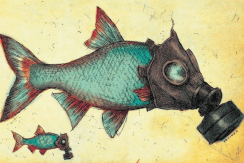
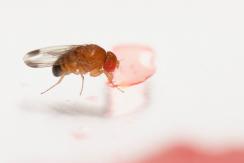
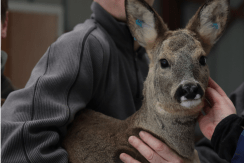
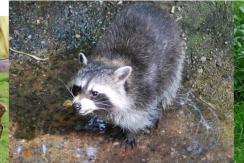
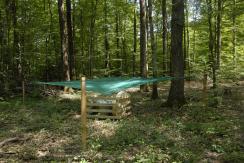
You also, comment on this article